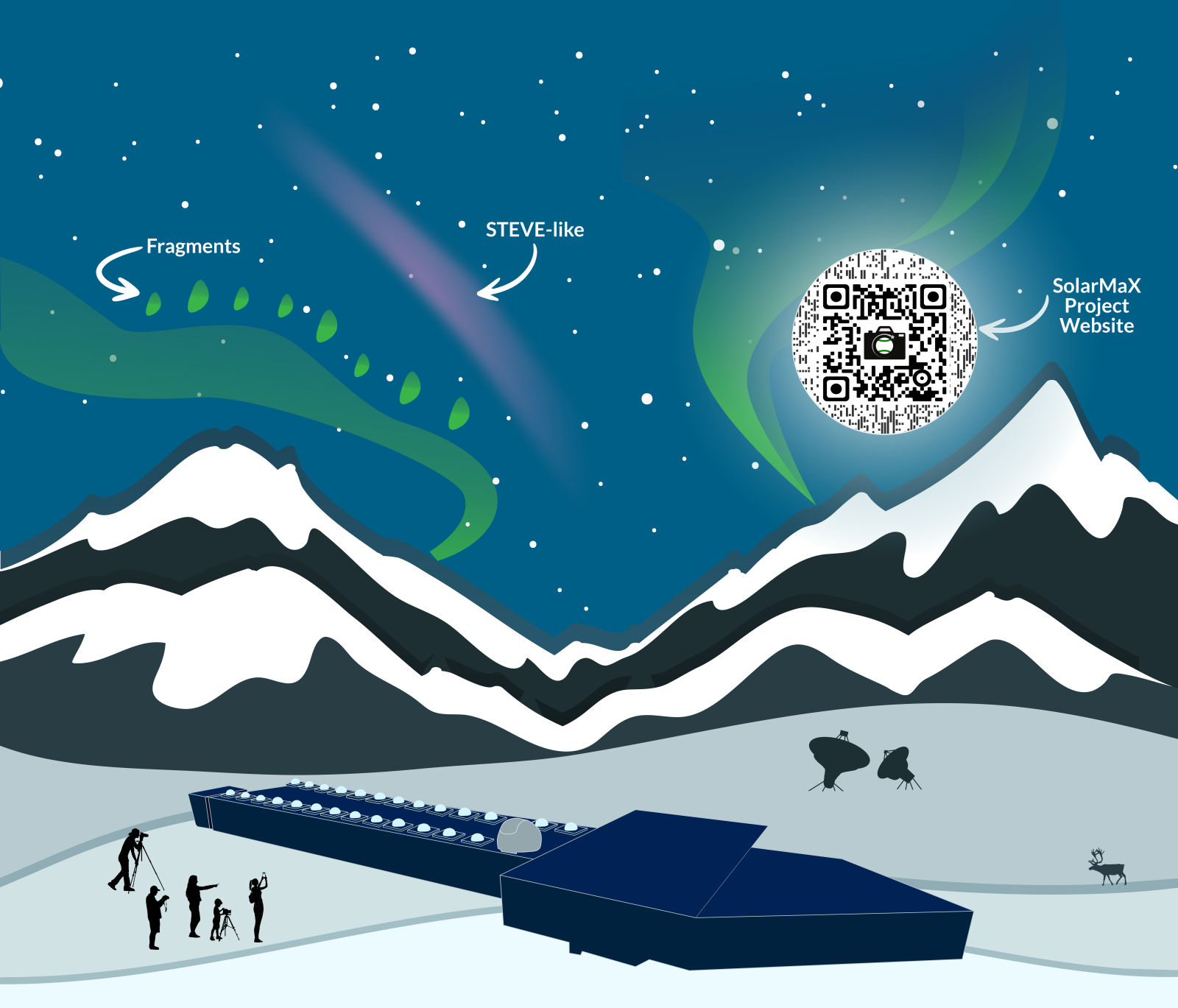
Given the recent surge in solar and geomagnetic activity, spectacular auroral displays have been visible down to the mid-latitudes several times since the beginning of 2024. But it is not always so easy to know when to go out, where to look, and how to take good pictures of the aurora. And what if the observations collected by seasoned and first-time aurora chasers could help in advancing the science?
The ARCTICS (Auroral Research Coordination: Towards Internationalised Citizen Science) working group, sponsored by the International Space Science Institute (ISSI) in Bern (Switzerland) since last year, recently released its Aurora Handbook for Citizen Science, together with an Aurora Field Guide for Citizen Science. ARCTICS gathers academics and citizen scientists (mainly) from Europe, North America, New Zealand, and Australia, who are working on leveraging citizen science for the studies of the aurora and other related processes in the dark-sky upper atmosphere.
The main objective of the Handbook is to share experience-based tips and advice on photographing and reporting aurora for science and how to foster productive, respectful, and stimulating collaboration between scientists and citizen scientists. The Handbook covers topics including basic facts about the aurora, tips for aurora chasing, highlights from successful citizen science collaborations in auroral studies, how to photograph the aurora, identification and report of auroral forms, advice for collaboration, and citizen science data management. It provides elements of answers to practical questions such as:
-
How can a scientist approach an aurora chaser whose photograph they would like to use in a scientific study?
-
How can a citizen scientist report a potentially interesting observation they made?
-
How can the scientific usability be maximised when photographing the aurora?
-
How can a scientist provide attribution and reciprocity in a citizen science collaboration?
The Field Guide is a key resource for aurora chasers to identify different types of auroras in photographs. It mainly consists of photographs of the aurora to illustrate some of the most common or most intriguing forms that dark-sky optical emissions can take. The photographs featured in the Field Guide were taken by members of the ARCTICS collaboration and give a sense not only of the typical appearance of a given auroral form but also of how variable this can be. The Field Guide complements the Handbook by providing multiple visual examples of different types of auroras, while the Handbook expands on the Field Guide by diving into greater detail with more comprehensive explanations on many of the topics.
To facilitate this connection, clickable links in the Field Guide direct users to the appropriate sections where they can learn more in the HTML version of the Handbook. Another great feature is that the Handbook can be viewed in dark mode, which can be useful for preserving night vision while in the field.
The guides can be used in the upcoming SolarMaX project, which is an exciting collaboration between astronauts, researchers, and citizen scientists. The Fram2 space mission will become the first-ever human spaceflight in polar orbit, set to launch in March 2025. While flying for 3–5 days in a polar orbit, the astronauts will continuously loop over the north and south poles, which gives them many opportunities to photograph the northern and southern auroral ovals from above! While they orbit, they will especially watch out for and attempt to photograph fragments, continuum emissions, STEVE, and streaks.

Illustration of the citizen science component of the SolarMaX project with some of the optical emission forms particularly targeted during the campaign. Image by Katie Herlingshaw.
Scientists request that citizen scientists act as ground support for the research and look out for the same features from their location. Combining images from the astronauts, citizen scientists, and scientific observatories will allow for the triangulation and 3D reconstruction of the features. Observing how the features evolve from space and the ground will also give insight into how the systems relate to each other and how they are coupled together. The Fram2 orbit will be provided in the Aurora Forecast 3D app closer to the launch date, so that citizen scientists can see exactly when and where the capsule will be overhead at their location. Anyone can take part in the project and contribute to scientific research – all you need is a camera or smartphone. Sign up for the mailing list to support the ARCTICS team in their research and get project updates. Some lucky people who submit their images will also win prizes that have been to space!
The ARCTICS Handbook and Field Guide can be freely viewed and downloaded from the following link:
https://kherli.github.io/Aurora-Field-Guide-And-Handbook/index.html
The guides are licensed under a Creative Commons Attribution-NonCommercial 4.0 International Licence (CC BY-NC 4.0) and can be cited with their doi as follows:
Herlingshaw, K., Lach, D., Dayton-Oxland, R., Bruus, E., Karvinen, E., Ledvina, V., Partamies, N., Grandin, M., Spijkers, M., Nishimura, Y., Knudsen, D., Ladbrook, L., Martinis, C., Gallardo-Lacourt, B., Dyer, A., Mielke, L., Ratzlaff, C., Evans, L., Helin, M., Kuzub, J., Barthelemy, M., Thomas, N., Glad, M., Donovan, E., Syrjäsuo, M., Cordon, S., Andersen, J., and Legg, C. (2024). ARCTICS Aurora Field Guide and Handbook for Citizen Science. Zenodo, https://doi.org/10.5281/zenodo.13931939.



